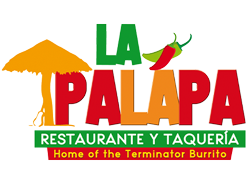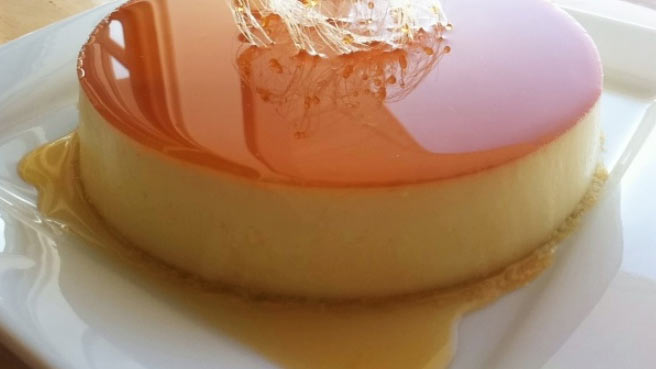It’s a shame that the sweet treats of Mexico are not nearly as well known as the land’s savory dishes, because this country as so much “sugar” to give! (And it’s not at all only about sugar skulls, which are available during only a short season every year.)
As happened in many parts of Latin America, natural fruit was the main sweet food consumed in the New World until European colonists began to raise sugar cane in the area. The resulting easy access to this sweetener and the widespread presence of Spanish religious sisters who had been taught to make European-style confections caused an explosion of culinary creativity among the nuns. Many of today’s traditional Mexican dishes, both sweet and savory, had their genesis behind monastery walls.
Some of Mexico’s favorite desserts, such as flan, are similar to those in other Latin American countries, due to the shared Iberian heritage. Many show evidence of the “Frenchification” of Mexican cuisine which occurred during the second half of the 19th century which reinforced the use of dairy products and introduced “fancy” pastry chef techniques. Other sweets are as humble and low-brow as can be—though not one bit less delightful. Peruse this delicious list for inspiration on how to have dessert a la mexicana.
01 Paletas or Mexican Ice Pops
Mexicans may not have originated the concept of a frozen pop, but they certainly have taken it to exquisite extremes of flavors. Rather than consisting of just colored sugar water, Mexican popsicles are made with chunks of genuine fresh fruit and/ or nuts and can be considered an actual food (rather than just a non-descript snack-type thingie).
02 Flan: Classic Caramel Custard
Flan exists in a million different varieties all over Spain and Latin America. It is eaten often by people in these countries, and the delights of this creamy, understatedly elegant dessert seem never to wane; professional chefs and home cooks continue to invent new versions and perfect the older ones.
For first-time flan makers, the process of coating the inside of the flan mold with a hard layer of melted sugar that, upon resting in the refrigerator, turns into a yummy liquid caramel seems almost magical. Making flan requires relatively few ingredients (at least, as compared to many other desserts) and is not difficult, but the science of correct temperatures and proportions is important, so follow the recipe’s instructions closely.
03 Gelatinas
Even though I have been unable to come up with specific per capita statistics on this, I know from personal experience that your average Mexican eats a lot of gelatin. Jello concoctions are eaten by men and women, old and young, people in all social groups—but it’s always a dessert or snack, never the “salad” that it often considered in parts of the United States.
Simple boxed gelatin mixes are popular in Mexico itself, including some made with agar-agar that do not require refrigeration to gel. Nonetheless, somewhat “fancier” individual servings of multi-colored jello, featuring artfully placed pieces of fruit and nuts, are available from street vendors and the corner store and are definitely part of everyday life. Oftentimes the gelatins are made with milk instead of water (and in flavors mostly unfamiliar to American cooks, such as chocolate, coconut, vanilla, and eggnog), adding a creamy aspect to the already cool, smooth, and flavorful one.
Gelatin is served alongside the usual cake at celebratory events like birthday parties and showers. Many Mexican homemakers take courses on how to make gelatinas artísticas, a true labor of love that is much admired before being devoured at any social gathering. Jello desserts are a big thing, and for good reasons: ingredients are generally relatively inexpensive, there are a great variety of flavors, shapes, and “mix-in” ingredients to choose from, it’s doable for people in a wide range of skill levels, and almost everyone will enjoy eating the gelatin once it is made.
I hope you are open to giving this worthy dessert another look. Start by making these ultra-simple Gelatin Squares, then move on to the ever-popular (and visually stunning, though easy to create) Mosaic Gelatin. Eventually you might even want to work up the inspiration to make the fabulous Tres Leches and Strawberry Mexican Gelatin!
04 Pastel de Tres Leches or 3 Milks Cake
The origins of this sweet delight are uncertain (several theories exist), but what is definite is its popularity in Spanish-speaking America. The cake’s name comes from the three dairy products—usually evaporated milk, sweetened condensed milk, and heavy cream—used in its elaboration.
The whole thing generally starts off with a sponge cake, which, after it has been baked and cooled, is soaked in a sweet, milky liquid. Shortly before serving, whipped cream is spread over the top of the cake as icing. The result is a cake in which each bite has a little liquid, a little cake, and a little creamy.
05 No-Bake Cakes and Pies
When you consider that Mexicans use their ovens a lot more for storage of pots and pans than for actual baking (it gets turned on only for very special occasions), it’s no wonder that no-bake cakes and pies are very popular in that country.
Graham crackers, practically ubiquitous in the United States, are often hard to come by in Latin America, but the ever-popular Maria cookies are used in similar ways in dessert recipes to make layers and crusts. A wonderful example of this sweet genre is our No-Bake Lime Refrigerator Cake, which packs quite a punch with its freshly-squeezed Mexican lime juice tempered by creamy, delicious sweetened condensed milk, in layers of Maria cookies that turn into moist “cake” after a night in the fridge.
Cheescake-type desserts are also very popular. Allow me to recommend this No-Bake Pumpkin Pie or this Easy No-Bake Pineapple Cheesecake to get you started. Substitute crumbled Maria cookies for the graham crackers called for in these recipes to give them a little Latin flair.
06 Arroz con Leche or Rice Pudding
Another perennial favorite among Spanish- and Portuguese-speaking countries, rice pudding is also very popular in countries as far-flung as Vietnam and South Africa. Despite the variations in types of rice, milk, and sweetener used, as well as the choice of spices and add-ins, rice pudding is generally made by boiling rice in a milky liquid, sweetening it, and serving it hot, warm, room temperature, or cold.
07 Mexican Wedding Cakes
They are cookies rather than actual cakes, and I never actually saw them served at wedding during my 23 years in Mexico, but who cares? These crumbly, powdered sugary little treasures are the perfect small dessert after a large meal, and don’t even get me started on how beautiful they look on a cookie tray during the holidays. Best all, Mexican Wedding Cakes are easy to make, so let the cooking baking begin!


Recent Comments